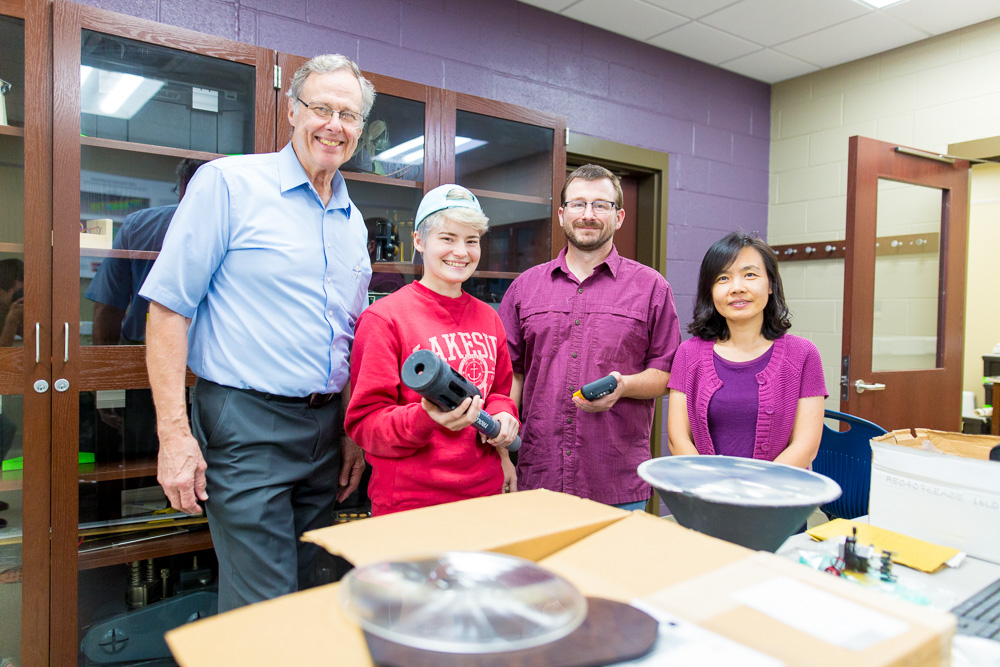Thanks to an agreement Eastern Mennonite University signed this summer with the National Aeronautics and Space Administration (NASA), the university’s new engineering major added a feather to its cap before students had even shown up for fall classes. Known as a Space Act Agreement, the arrangement is authorized by a federal law that allows NASA to collaborate with universities and private companies on mutually beneficial research.
“It’s a really big deal,” said engineering professor Esther Tian, whose students will tour robotics, aeronautics, remote sensing and materials laboratories at NASA’s Langley Research Center in Hampton, Virginia, in late October. “I think it will really strengthen our new engineering program.”
Under the terms of the three-year agreement with EMU, NASA scientists will periodically visit campus for lectures and seminars; work with engineering, biology and chemistry faculty on course and curriculum review; and collaborate with EMU faculty and students on research programs.
NASA is also providing EMU with a spectrometer for the chemistry laboratory and water quality sampling equipment for the environmental science program. Tian said her engineering department may also receive new laboratory equipment in the future.

EMU’s primary contact at NASA is Russell DeYoung, a researcher who studies ozone in the atmosphere as well as the effects that climate change will have on the Langley Research Center. DeYoung, who attends a Mennonite church, first approached former EMU President Loren Swartzendruber about a year ago with the idea of this partnership between EMU and NASA.
“What’s most exciting is having students directly involved with NASA research … so they can see the end goal of all their hard work,” said DeYoung. “It’s a win-win for them and certainly for NASA to collaborate on specific research projects.”
The agreement calls for NASA and EMU to identify three joint research topics over the coming months, likely involving study of ozone, the impact of hydrofracking on air quality and capstone engineering projects. Students working on these projects will benefit from having the supervision of EMU faculty as well as mentorship from scientists at NASA, which will also offer summer internships at the Langley Research Center to students in EMU science and engineering programs.
“This is a great opportunity for our STEM students and faculty,” said Provost Fred Kniss. “Not only will our programs gain access to equipment and expert knowledge resources, our students will have opportunities to connect with NASA scientists and laboratories. It’s a real win-win scenario because NASA is also able to advance their strategic goals around STEM talent development.”
On Jan. 25, DeYoung will be on campus to lead a Suter Science Seminar on recent discoveries about the solar system.
Tian founded a chapter of Engineers for a Sustainable World when she arrived at EMU four years ago. Given DeYoung’s work on climate change with NASA, and the recent opening of the Center for Sustainable Climate Solutions at EMU, she hopes that the new agreement will also offer new opportunities to members of her club who are interested in the intersection of engineering and environmental sustainability.
